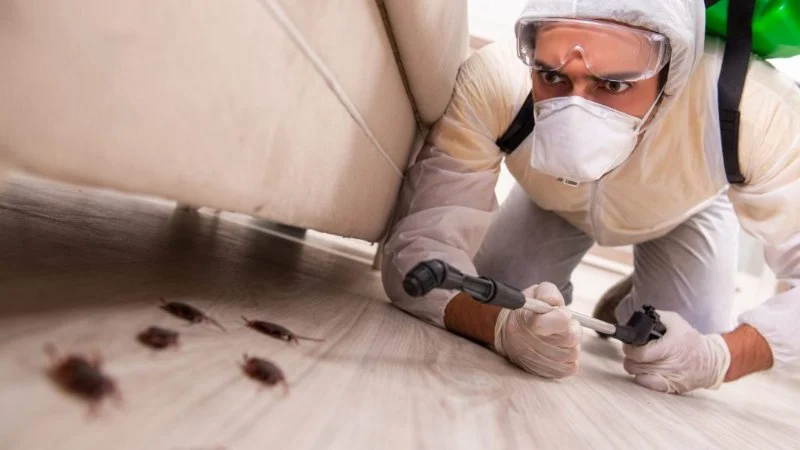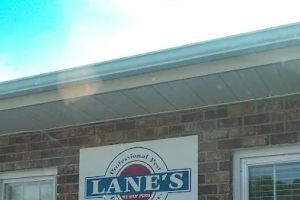
1. Why Cleaning Surfaces After Pest Treatments is Important
After a pest treatment in your home or office, cleaning the surfaces is essential to maintain hygiene and prevent any residual chemicals from affecting your family or pets. Cleaning surfaces after a pest treatment ensures the removal of pesticide residues and reduces the chance of re-infestation. This guide explores the best ways to clean different types of surfaces, the safety precautions to consider, and the tools you need for the task.

Lane's Professional Pest
Surfside BeachHorry CountySouth Carolina
515 Azalea Dr N, Surfside Beach, SC 29575, USA
2. How Long Should You Wait Before Cleaning?
Many pest control treatments require a waiting period before cleaning the treated areas. It's important to follow the manufacturer's instructions on the pesticide label to ensure both the safety of your home and the effectiveness of the treatment. In most cases, it’s recommended to wait at least 24 to 48 hours before cleaning to allow the pesticide to dry and settle.
Some treatments, like sprays or foggers, might leave a residue that could be harmful if cleaned too soon. However, for most dust-based treatments, the waiting time might be shorter. Always check with your pest control professional for personalized advice regarding your specific treatment.
3. Steps to Clean Different Surfaces After Pest Treatments
3.1. Cleaning Hard Surfaces (Floors, Walls, Counters)
For hard surfaces such as floors, countertops, and walls, the goal is to remove any chemical residues left by the pest control treatment. Here’s how to clean them:
- Start by wiping the surface with a damp cloth to remove any excess dust or debris.
- Use a mild detergent mixed with warm water to wash the area thoroughly. Avoid strong chemicals that may interact with the pesticide residues.
- Rinse the surface with clean water and dry it with a dry towel to avoid streaks or any leftover moisture.
3.2. Cleaning Carpets and Upholstery
Cleaning carpets and upholstery is a bit more complicated due to the nature of fabric. Here’s how you can clean these areas effectively:
- If possible, vacuum the area thoroughly to remove any pesticide dust or debris. Make sure to use a vacuum cleaner with a HEPA filter for best results.
- For upholstery, spot clean with a gentle fabric cleaner, and avoid saturating the fabric to prevent mold growth.
- If cleaning a carpet, consider using a steam cleaner. Steam can help to break down pesticide residues without introducing harsh chemicals to the fibers.
3.3. Cleaning Kitchen and Food Preparation Areas
Surfaces in the kitchen, such as countertops, cutting boards, and tables, should be cleaned carefully to avoid contamination of food. Here’s the best way to clean kitchen surfaces after pest treatments:
- Wipe down surfaces with a mixture of water and white vinegar to disinfect and remove pesticide residues.
- For cutting boards or utensils, wash them in hot, soapy water to eliminate any traces of pesticides.
4. Safety Tips for Cleaning After Pest Treatments
While cleaning after a pest treatment, it’s crucial to prioritize safety. Here are a few tips to ensure safe cleaning:
- Wear gloves to avoid direct contact with pesticide residues.
- Open windows and ventilate the area to help air out any lingering fumes from the pest treatment.
- If you have pets or young children, consider waiting a little longer before they re-enter treated areas. Keep them away from treated areas until they are thoroughly cleaned and ventilated.
5. Common Mistakes to Avoid
Many homeowners make common mistakes when cleaning after pest treatments. Here are some of the most frequent errors:
- Cleaning too soon: As mentioned earlier, it’s important to wait at least 24 hours to allow the treatment to fully dry.
- Using harsh chemicals: Strong cleaners can break down the pesticide or make it more harmful. Stick to mild, non-abrasive solutions for cleaning.
- Neglecting ventilation: Always ensure the treated areas are well-ventilated after cleaning to reduce the concentration of any remaining fumes.
6. Professional Help: When to Call the Experts
If you're unsure about the best cleaning methods or need help with larger areas, consider contacting pest control professionals. They can provide expert advice on how to clean after pest treatments and may even offer cleaning services. Additionally, if you notice persistent issues or further signs of infestation, reaching out to PestControlHub can help you get the best products, services, and expert guidance tailored to your specific needs.
7. Conclusion
Cleaning surfaces after a pest treatment is an important step to ensure that your home remains safe, clean, and pest-free. By following the proper steps, you can remove harmful residues while maintaining a healthy environment. Always remember to consult your pest control professional for any specific recommendations based on the type of treatment used. And if you’re looking for the best pest control products, be sure to visit PestControlHub for expert recommendations and reliable services!








 Wildlife Resolutions4.0 (443 reviews)
Wildlife Resolutions4.0 (443 reviews) Pest Marshals of Toledo5.0 (2 reviews)
Pest Marshals of Toledo5.0 (2 reviews) LS Rodent Proofing & Pest Control Service5.0 (4 reviews)
LS Rodent Proofing & Pest Control Service5.0 (4 reviews) Best Termite & Pest Control4.0 (16 reviews)
Best Termite & Pest Control4.0 (16 reviews) Varment Guard Wildlife Services5.0 (28 reviews)
Varment Guard Wildlife Services5.0 (28 reviews) Pestban Inc4.0 (394 reviews)
Pestban Inc4.0 (394 reviews) How to Use Monitors to Detect Pest Entry: A Comprehensive Guide
How to Use Monitors to Detect Pest Entry: A Comprehensive Guide How to Predict Which Pests Will Invade Next – Smart Pest Forecasting for the U.S.
How to Predict Which Pests Will Invade Next – Smart Pest Forecasting for the U.S. How to Conduct a Pest Risk Assessment at Home – Expert Guide
How to Conduct a Pest Risk Assessment at Home – Expert Guide How to Block Pest Entry Around Deck Joists: Effective Solutions
How to Block Pest Entry Around Deck Joists: Effective Solutions How to Safely Use Fumigation Methods: A Comprehensive Guide for Homeowners
How to Safely Use Fumigation Methods: A Comprehensive Guide for Homeowners Why Pests Are More Active After Rain: Understanding the Link Between Weather and Pest Behavior
Why Pests Are More Active After Rain: Understanding the Link Between Weather and Pest Behavior